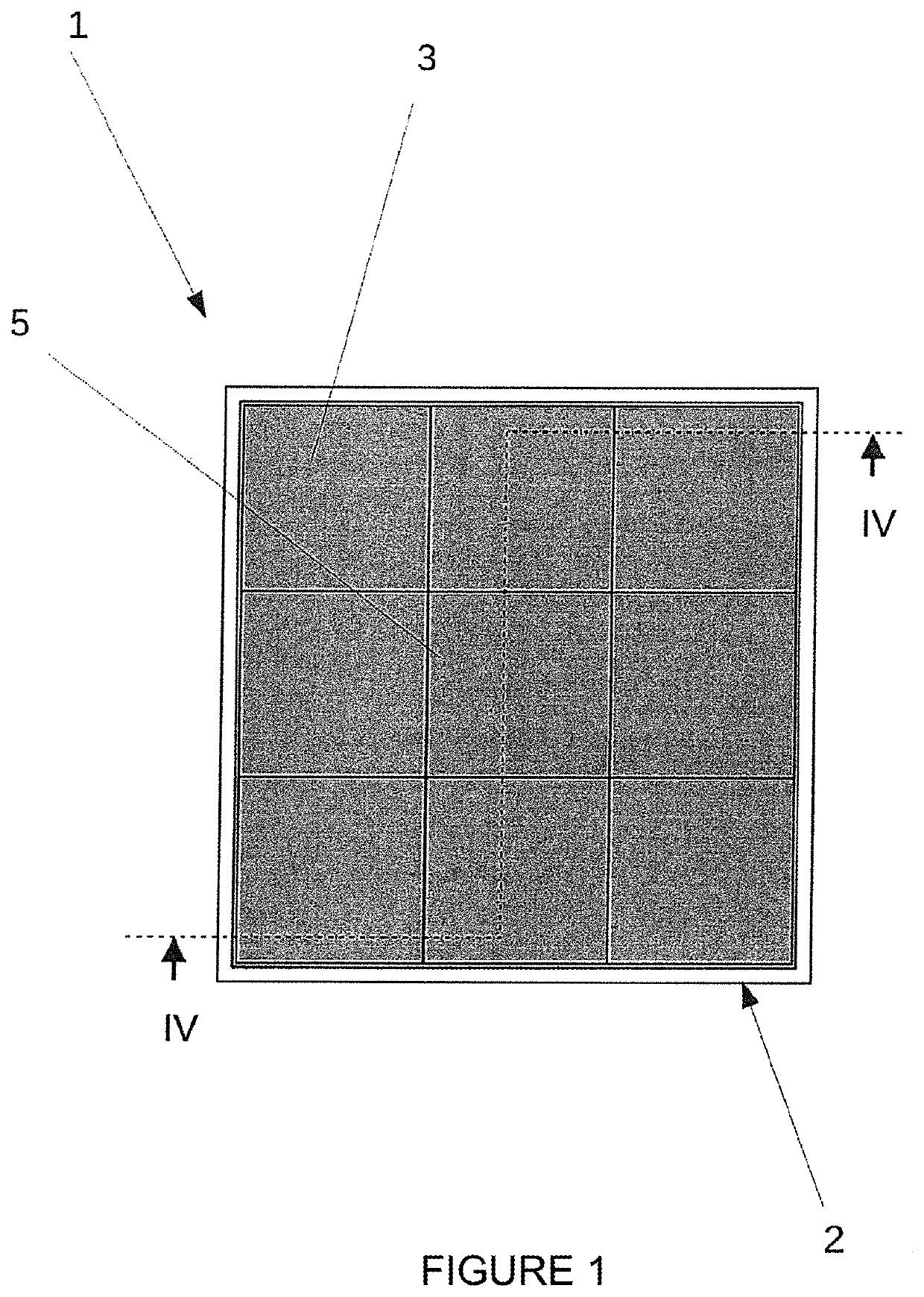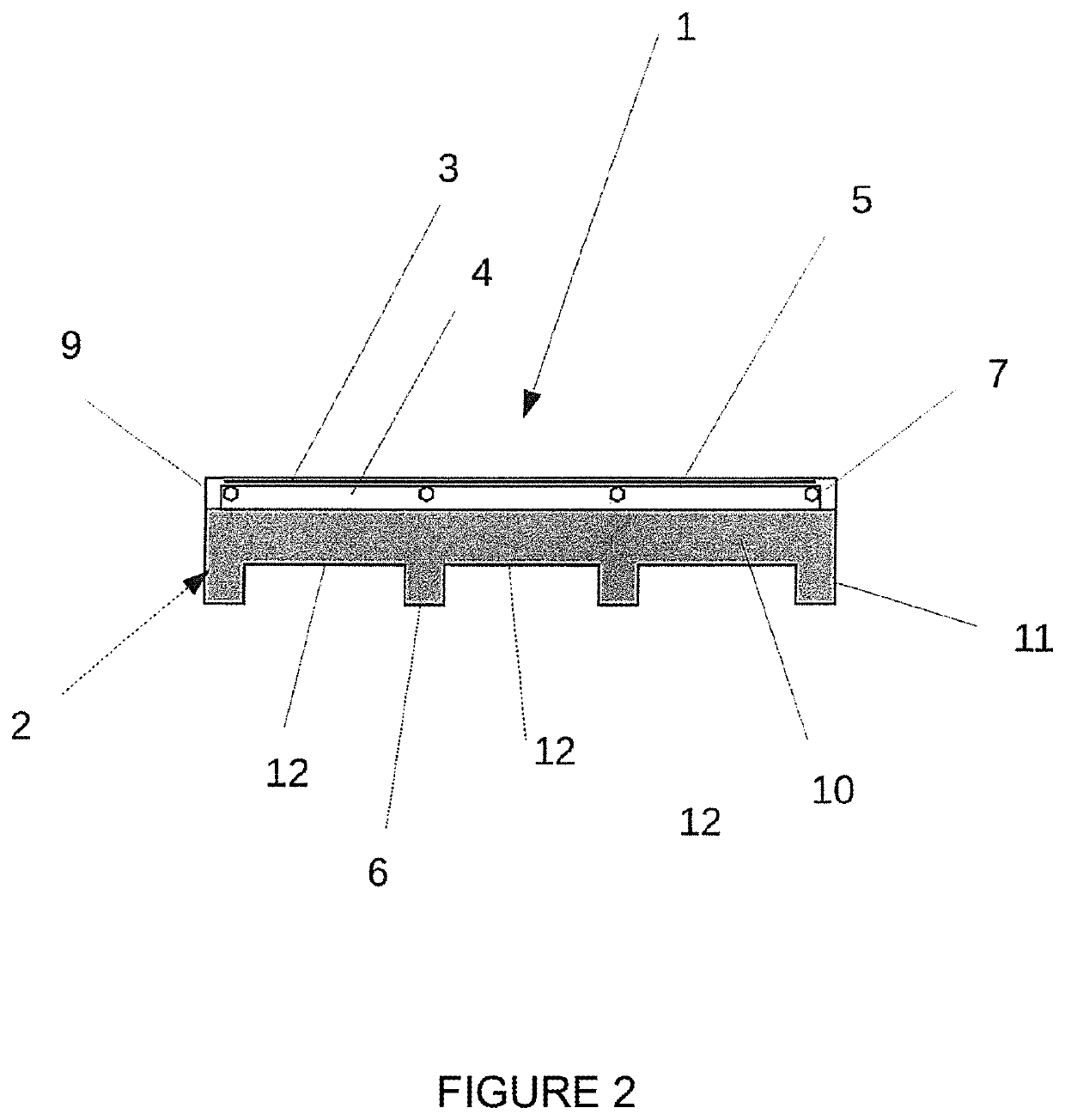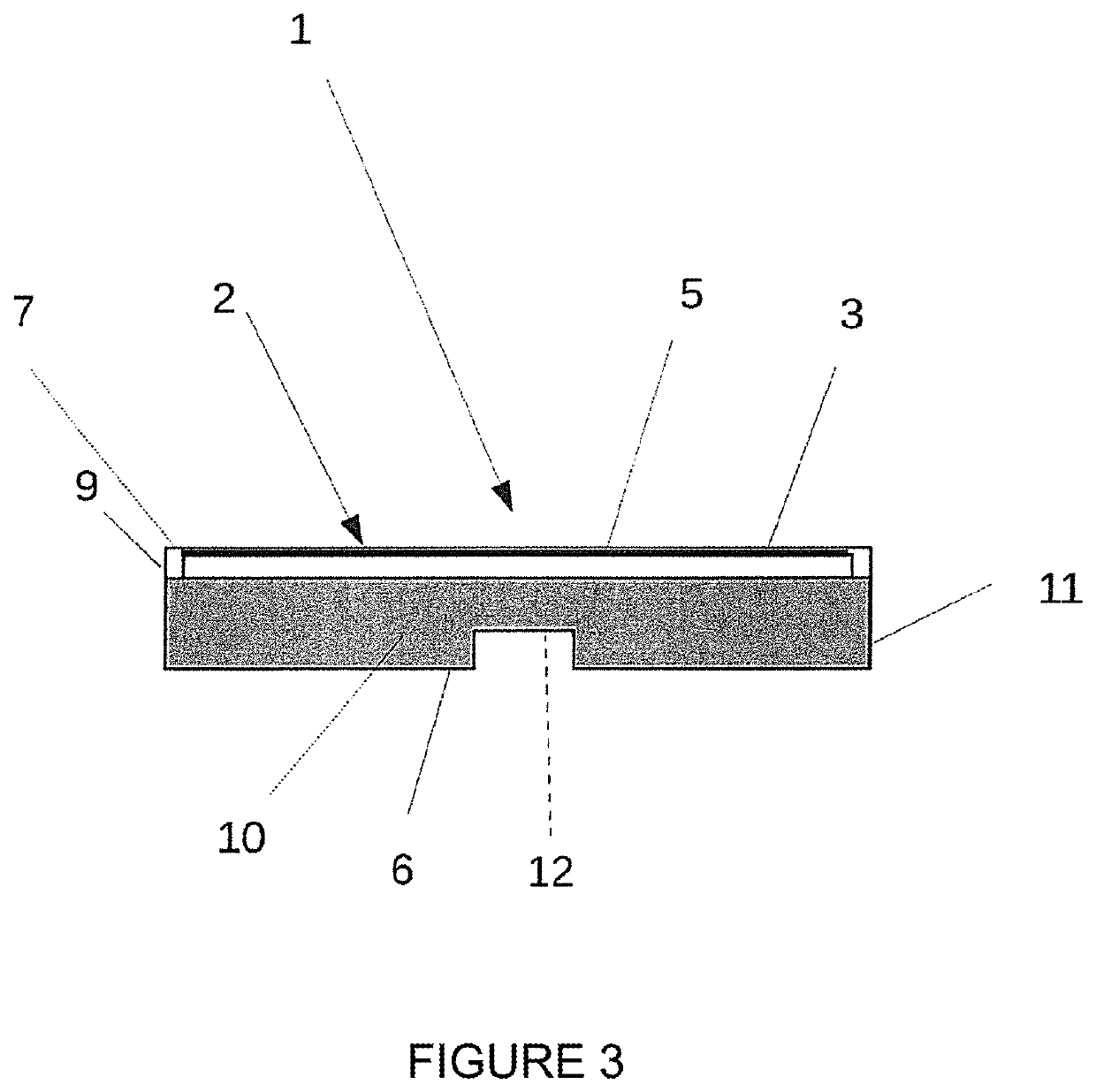Thermophotovoltaic panel and a method for making a thermophotovoltaic panel
a thermophotovoltaic panel and photovoltaic panel technology, applied in the direction of solar heat collector details, heat collector mounting/support, light and heating apparatus, etc., can solve the problems of space available and the use of panels of this typ
- Summary
- Abstract
- Description
- Claims
- Application Information
AI Technical Summary
Benefits of technology
Problems solved by technology
Method used
Image
Examples
Embodiment Construction
[0035]In FIG. 1 the numeral 1 denotes a thermophotovoltaic panel according to a preferred embodiment of the invention shown in top view. According to the invention, the panel 1 comprises a body 2 constituted of at least one resin in which there are embedded photovoltaic cells 3 connected to a heat exchanger 4, illustrated in FIGS. 4, 5, 6 and 7. The resin body 2 comprises a first surface 5 to which the photovoltaic cells 3 are connected, the latter being designed to receive solar radiation and convert it into electric energy. The photovoltaic cells 3 are preferably made of monocrystalline silicon. Preferably the resin is a cold-polymerised epoxy resin. The photovoltaic cells 3 are connected to the heat exchanger 4 for example by means of silicone paste with high thermal conductivity. As shown in FIG. 4, the heat exchanger 4 is positioned between the first receiving surface 5 and a second supporting surface 6 of the panel 1, opposite to the first. According to the invention the resin...
PUM
| Property | Measurement | Unit |
|---|---|---|
| thickness | aaaaa | aaaaa |
| thickness | aaaaa | aaaaa |
| thickness | aaaaa | aaaaa |
Abstract
Description
Claims
Application Information
 Login to View More
Login to View More - R&D
- Intellectual Property
- Life Sciences
- Materials
- Tech Scout
- Unparalleled Data Quality
- Higher Quality Content
- 60% Fewer Hallucinations
Browse by: Latest US Patents, China's latest patents, Technical Efficacy Thesaurus, Application Domain, Technology Topic, Popular Technical Reports.
© 2025 PatSnap. All rights reserved.Legal|Privacy policy|Modern Slavery Act Transparency Statement|Sitemap|About US| Contact US: help@patsnap.com



